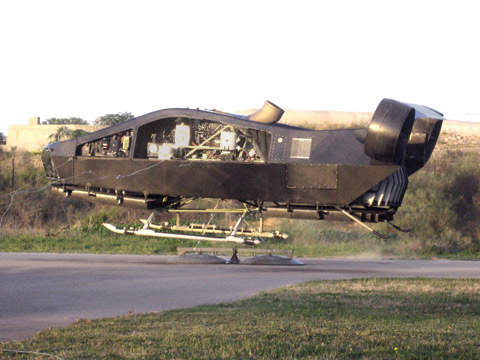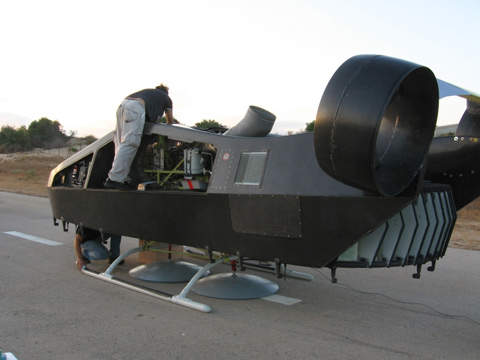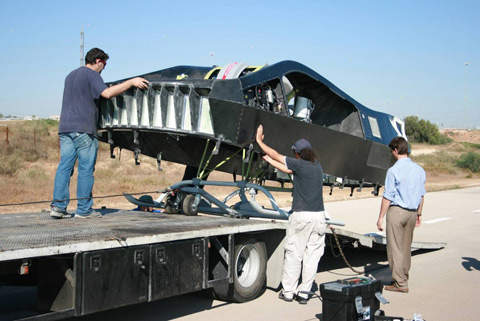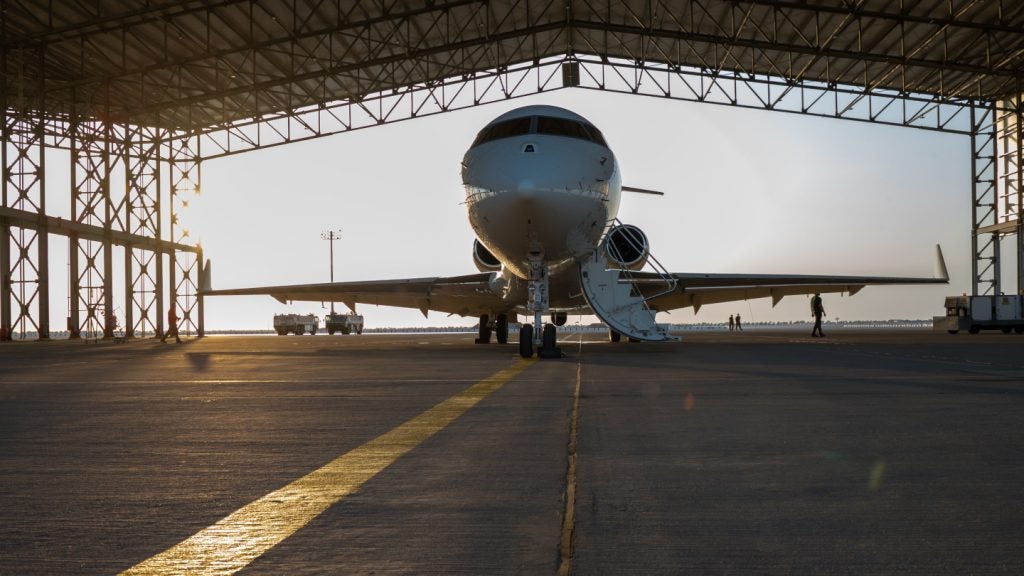The Cormorant (formerly AirMule) is an unmanned air vehicle (UAV) designed and developed by Israel’s Urban Aeronautics to meet the requirements of the Israeli Defence Forces.
The Cormorant successfully completed its first phase of flight testing in January 2010. Its maiden flight, which was scheduled for April 2009, has been postponed. In June 2009, the UAV was shipped to an airstrip in central Israel to perform a series of ground tests for hover testing.
In 2011, Urban Aeronautics resumed flight tests of the Cormorant prototype equipped with enhanced sensors suite and a new wheeled landing gear. In 2012, the UAV was further upgraded with Controp’s D-STAMP stabilised, electro-optic payload and a double redundant hydraulic system.
Test flights of the upgraded air vehicle began in late 2012 and a number of fully automatic test flights were concluded by December 2013. Construction on the second prototype started in December 2011.
The first autonomous pattern flight of the Cormorant UAV was successfully conducted by Urban Aeronautics in November 2016.
Cormorant cargo UAV variants
In January 2009, Urban Aeronautics designed a cargo variant that will be able to fly at speeds of up to 250k. Wing tunnel testing of the variant began on 7 January 2009.
Cormorant transporter UAV design and development
The Cormorant was developed during the war in Lebanon in 2006 as a way of transferring troops and medical equipment. The UAV has vertical take-off and landing (VTOL) capability and can be operated in remote areas, where helicopters and traditional rotorcraft cannot function properly.
The Cormorant is intended for cargo transport, medical evacuation and troop supply missions. The payload bays, which are being incorporated in the vehicle, will double the rescue cabin space for wounded soldiers.
Navigation
The Cormorant can be controlled either manually from a ground control station (GCS) or through an autonomous mode using an automatic fly-by-wire system. The Cormorant will land safely despite communication errors in the GCS.
Avionics
The UAV’s fly-by-wire can be controlled using a four-channel flight control system that depends on inertial measurements increased by a global positioning system equipped in the aircraft.
Two laser altimeters are incorporated in the vehicle to determine the height of the UAV above the ground. The aircraft is also equipped with a vane control system to produce either side force or rolling moment.
A total of 460 channels fitted in the aircraft send real-time data to the ground station operators, which allow them to track the operations of the engine and subsystems. The subsystems include three gear boxes, two main lift rotors and three uplink and downlink communication channels.
In February 2014, Urban Aeronautics selected Green Hills Software’s INTEGRITY real-time operating system (RTOS) and MULTI integrated development environment (IDE) for the flight management of the UAV.
Sensors and radars
The UAV is equipped with infrared sensors and two laser sensors for monitoring flight altitude. The Cormorant’s radars include a synthetic aperture radar and a ground-moving target indicator.
Engines
The UAV is powered by a single Arriel 1D1 turboshaft engine, which can produce 559kW of electric power.
Performance
The Cormorant can fly at a maximum speed of 185km/h. Its maximum altitude is 3,657m. Its maximum endurance is between two and four hours. The UAV weighs around 635kg and its maximum take-off weight is 1,088kg.
Ground control unit
The data retrieved and transferred by the Cormorant will be stored at a ground control unit (GCU), which will be equipped with an air data computer for displaying its position. The GCU will monitor telemetry data supplied by the UAV using uplink and downlink communication devices.
The Global Unmanned Aerial Vehicles (UAV) Market 2011-2021
This project forms part of our recent analysis and forecasts of the global unmanned aerial vehicles (UAV) market available from our business information platform Strategic Defence Intelligence. For more information click here or contact us: EMEA: +44 20 7936 6783; Americas: +1 415 439 4914; Asia Pacific: +61 2 9947 9709 or via email.












